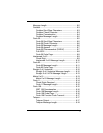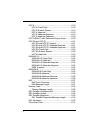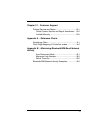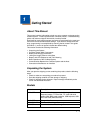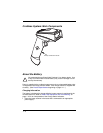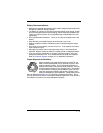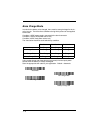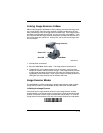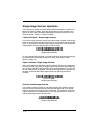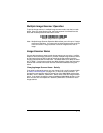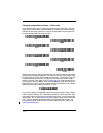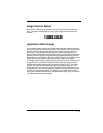
1 - 3
Battery Recommendations
• Batteries are shipped approximately 30% to 60% charged and should be fully
charged for maximum charge capacity.
• The battery is a lithium ion cell and can be used without a full charge, as well
as can be charged without fully discharging, without impacting the battery life.
There is no need to perform any charge/discharge conditioning on this cell
type battery.
• Do not disassemble the battery. There are no user-serviceable parts in the
battery.
• Keep the base connected to power when the host is not in use.
• Replace a defective battery immediately since it could damage the image
scanner.
• Don’t short-circuit a battery or throw it into a fire. It can explode and cause
severe personal injury.
• Although your battery can be recharged many times, it will eventually be
depleted. Replace it after the battery is unable to hold an adequate charge.
• If you are not sure if the battery or charger is working properly, send it to
Honeywell International Inc. or an authorized service center for inspection.
Refer to Customer Support on page 13-1 for additional information
Proper Disposal of the Battery
When the battery has reached the end of its useful life, the
battery should be disposed of by a qualified recycler or haz-
ardous materials handler. Do not incinerate the battery or
dispose of the battery with general waste materials. You may
send the imager’s battery to us. (postage paid). The shipper
is responsible for complying with all federal, state, and local
laws and regulations related to the packing, labeling, mani-
festing, and shipping of spent batteries. Contact the Product
Service Department (page 13-1) for recycling or disposal information. Since
you may find that your cost of returning the batteries significant, it may be more
cost effective to locate a local recycle/disposal company.



